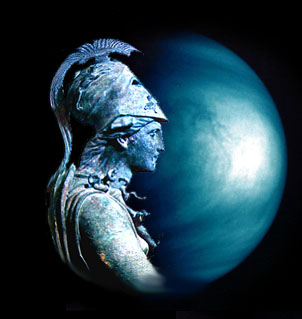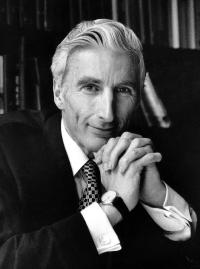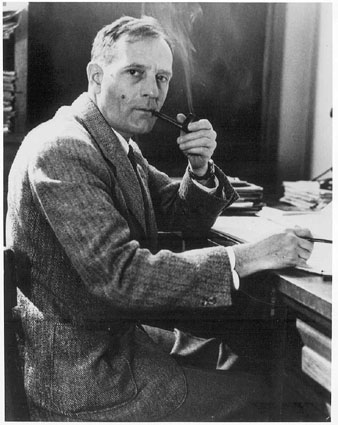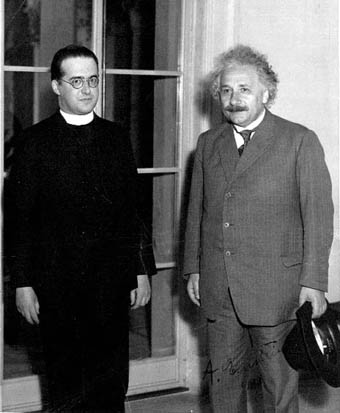holoscience.com | The ELECTRIC UNIVERSE®
A sound cosmology for the 21st century

An Open Letter to Closed Minds

Everything astronomers can see, stretching out to distances of 10 billion light-years, emerged from an infinitesimal speck.
– Martin Rees, Our Cosmic Habitat (2001).“A widely-accepted foundation stone of scientific logic involves a process of elimination, requiring all available possibilities to be considered with incorrect ideas discarded when they fail to predict experimental results. Just as the police must consider all possible suspects during an investigation, so a scientist must, as a matter of professional responsibility and competence, consider all possible explanations when forming his conclusions. However, some scientists are able to ignore these duties, while the safeguards built into the scientific bureaucracy, supposedly to ensure quality, do not prevent such malpractice but rather enable it.”
– John Hewitt, A Habit of Lies.
The open letter exhibited here is addressed to the scientific community by a leading group of concerned scientists. It questions a core belief – the belief in the so-called big bang theory. So it will be instructive to watch the behavior of that community in response. Already, the first line of defense – censorship – has held. The journal Nature rejected the letter for publication. New Scientist, the more populist magazine, on 22 May 2004 finally published the letter under the title ”Bucking the big bang.” [Note: This news item was temporarily withdrawn while waiting for publication of the final version of the letter. (Link updated July 2018)]
“You could write the entire history of science in the last 50 years in terms of papers rejected by Science or Nature.”
– Paul C. Lauterbur, winner of the Nobel Prize for medicine, whose seminal paper on magnetic resonance imaging was originally rejected by Nature.
That scathing commentator on errant human behavior, John Ralston Saul, has compared the scientific community to the medieval church. Some of the signatories to the open letter would agree with him. We humans, at least the males it seems, have a penchant for setting up organizations – political, religious, and scientific – that with time become authoritarian, exclusive and dogmatic. Despite this we are led to believe that scientists are somehow trained to be above such human failings. The deception only succeeds because there is no effective investigative reporting of science.
A challenge to orthodoxy tends to be ignored at first. But if it gains popular support, the first move is to discredit and silence the challenger. The protectors of the scientific faith often parade the “scientific method” like a holy icon to warn off evil, heretical spirits. And the demand is made that “extraordinary claims demand extraordinary evidence.” However, as Robert Matthews in the New Scientist of 13 March 2004 notes:
“Over the years, sociologists and historians have often pointed out the glaring disparity between how science is supposed to work and what really happens. While scientists routinely dismiss these qualms as anecdotal, subjective or plain incomprehensible, the suspicion that there is something wrong with the scientific process itself is well founded. The proof comes from a rigorous mathematical analysis of how evidence alters our belief in a scientific theory.”
“Belief” is the crux of the matter. The usual declaration that extraordinary claims demand extraordinary evidence is merely a smokescreen for the fact that no amount of evidence will change the consensus view until a sufficient number “convert” to a belief in the new theory. Science is therefore a political numbers game based on subjective beliefs. Max Planck was right when he said:
“An important scientific innovation rarely makes its way by gradually winning over and converting its opponents. What does happen is that its opponents gradually die out, and that the growing generation is familiarized with the ideas from the beginning.”
Matthews continues:
“It gets worse. As the evidence accumulates, the two camps will not only fail to reach consensus but actually be driven further apart – propelled by their different views ..And worst of all, there is no prospect of such a consensus unless the two sides can agree about the cause of the data.”
Such a conclusion bodes ill for any attempt to change the status quo. Meanwhile, the big bang theory continues to make extraordinary claims based upon little or no evidence.
An Open Letter to the Scientific Community
(Published in New Scientist, May 22, 2004)
The big bang today relies on a growing number of hypothetical entities, things that we have never observed– inflation, dark matter and dark energy are the most prominent examples. Without them, there would be a fatal contradiction between the observations made by astronomers and the predictions of the big bang theory. In no other field of physics would this continual recourse to new hypothetical objects be accepted as a way of bridging the gap between theory and observation. It would, at the least, raise serious questions about the validity of the underlying theory.
But the big bang theory can’t survive without these fudge factors. Without the hypothetical inflation field, the big bang does not predict the smooth, isotropic cosmic background radiation that is observed, because there would be no way for parts of the universe that are now more than a few degrees away in the sky to come to the same temperature and thus emit the same amount of microwave radiation.
Without some kind of dark matter, unlike any that we have observed on Earth despite 20 years of experiments, big-bang theory makes contradictory predictions for the density of matter in the universe. Inflation requires a density 20 times larger than that implied by big bang nucleosynthesis, the theory’s explanation of the origin of the light elements. And without dark energy, the theory predicts that the universe is only about 8 billion years old, which is billions of years younger than the age of many stars in our galaxy.
What is more, the big bang theory can boast of no quantitative predictions that have subsequently been validated by observation. The successes claimed by the theory’s supporters consist of its ability to retrospectively fit observations with a steadily increasing array of adjustable parameters, just as the old Earth-centred cosmology of Ptolemy needed layer upon layer of epicycles.
Yet the big bang is not the only framework available for understanding the history of the universe. Plasma cosmology and the steady-state model both hypothesise an evolving universe without beginning or end. These and other alternative approaches can also explain the basic phenomena of the cosmos, including the abundances of light elements, the generation of large-scale structure, the cosmic background radiation, and how the redshift of far-away galaxies increases with distance. They have even predicted new phenomena that were subsequently observed, something the big bang has failed to do.
Supporters of the big bang theory may retort that these theories do not explain every cosmological observation. But that is scarcely surprising, as their development has been severely hampered by a complete lack of funding. Indeed, such questions and alternatives cannot even now be freely discussed and examined. An open exchange of ideas is lacking in most mainstream conferences. Whereas Richard Feynman could say that “science is the culture of doubt”, in cosmology today doubt and dissent are not tolerated, and young scientists learn to remain silent if they have something negative to say about the standard big bang model. Those who doubt the big bang fear that saying so will cost them their funding.
Even observations are now interpreted through this biased filter, judged right or wrong depending on whether or not they support the big bang. So discordant data on red shifts, lithium and helium abundances, and galaxy distribution, among other topics, are ignored or ridiculed. This reflects a growing dogmatic mindset that is alien to the spirit of free scientific enquiry.
Today, virtually all financial and experimental resources in cosmology are devoted to big bang studies. Funding comes from only a few sources, and all the peer-review committees that control them are dominated by supporters of the big bang. As a result, the dominance of the big bang within the field has become self-sustaining, irrespective of the scientific validity of the theory.
Giving support only to projects within the big bang framework undermines a fundamental element of the scientific method — the constant testing of theory against observation. Such a restriction makes unbiased discussion and research impossible. To redress this, we urge those agencies that fund work in cosmology to set aside a significant fraction of their funding for investigations into alternative theories and observational contradictions of the big bang. To avoid bias, the peer review committee that allocates such funds could be composed of astronomers and physicists from outside the field of cosmology.
Allocating funding to investigations into the big bang’s validity, and its alternatives, would allow the scientific process to determine our most accurate model of the history of the universe.
Initial signers:
(Institutions for identification only)Halton Arp, Max-Planck-Institute Fur Astrophysik (Germany)
Andre Koch Torres Assis, State University of Campinas (Brazil)
Yuri Baryshev, Astronomical Institute, St. Petersburg State University (Russia)
Ari Brynjolfsson, Applied Radiation Industries (USA)
Hermann Bondi, Churchill College, Cambridge (UK)
Timothy Eastman, Plasmas International (USA)
Chuck Gallo, Superconix, Inc.(USA)
Thomas Gold, Cornell University (emeritus) (USA)
Amitabha Ghosh, Indian Institute of Technology, Kanpur (India)
Walter J. Heikkila, University of Texas at Dallas (USA)
Michael Ibison, Institute for Advanced Studies at Austin (USA)
Thomas Jarboe, Washington University (USA)
Jerry W. Jensen, ATK Propulsion (USA)
Menas Kafatos, George Mason University (USA)
Eric J. Lerner, Lawrenceville Plasma Physics (USA)
Paul Marmet, Herzberg Institute of Astrophysics(retired) (Canada)
Paola Marziani, Istituto Nazionale di Astrofisica, Osservatorio Astronomico di Padova (Italy)
Gregory Meholic, The Aerospace Corporation (USA)
Jacques Moret-Bailly, Université Dijon (retired) (France)
Jayant Narlikar, IUCAA(emeritus) and College de France (India,France)
Marcos Cesar Danhoni Neves, State University of Maringá (Brazil)
Charles D. Orth, Lawrence Livermore National Laboratory (USA)
R. David Pace, Lyon College (USA)
Georges Paturel, Observatoire de Lyon (France)
Jean-Claude Pecker, College de France (France)
Anthony L. Peratt, Los Alamos National Laboratory (USA)
Bill Peter, BAE Systems Advanced Technologies (USA)
David Roscoe, Sheffield University (UK)
Malabika Roy, George Mason University (USA)
Sisir Roy, George Mason University (USA)
Konrad Rudnicki, Jagiellonian University (Poland)
Domingos S.L. Soares, Federal University of Minas Gerais (Brazil)
John L. West, Jet Propulsion Laboratory, California Institute of Technology (USA)
James F. Woodward, California State University, Fullerton (USA)
What is the Real Problem with Cosmology?
The sentiments expressed in the open letter are welcome. However, I don’t think it will result in any change. The proposal that “the peer review committee that allocates such funds could be composed of astronomers and physicists from outside the field of cosmology,” is a small step in the direction that science generally should be taking. However, many astronomers and physicists outside the field of cosmology believe in the big bang theory or have a vested interest in it. It would be preferable if there were a kind of jury system with educated people from engineering and the humanities as well. Any proposal that could not be explained simply to such an audience would demonstrate that the author did not understand it either. In addition, arguments against a proposal should be admissible from any quarter.
The modern problem with cosmology began with an assumption about the nature of the redshift in the spectrum of faint extragalactic objects, discovered by Edwin Hubble. Hubble wrote:
“If the redshifts are a Doppler shift … the observations as they stand lead to the anomaly of a closed universe, curiously small and dense, and, it may be added, suspiciously young. On the other hand, if redshifts are not Doppler effects, these anomalies disappear and the region observed appears as a small, homogeneous, but insignificant portion of a universe extended indefinitely both in space and time.”
(Royal Astronomical Society Monthly Notices, 17, 506, 1937).

Hubble’s logical scientific attitude toward the phenomenon of extragalactic redshift is in stark contrast to the illogical and nonsensical opening quotation from the Astronomer Royal. The big bang theory sprang from a theoretical preference for Hubble’s first possibility. Hubble’s brilliant student, Halton Arp, later confirmed that the second possibility was correct. But by then the big bang theory had become dogma. Arp was effectively “excommunicated” for his heresy.

The medieval church of science now has its own miraculous version of creation, partly because the astronomer who first proposed the Big Bang, Georges Lemaitre, wanted to reconcile the creation of the universe to Genesis. It is reported that after the Belgian detailed his theory, Einstein stood up, applauded, and said, “This is the most beautiful and satisfactory explanation of creation to which I have ever listened.” But the great surrealist artist, Salvador Dali, has effectively parodied Einstein’s appreciation of aesthetics. Einstein also said, “When I examined myself and my methods of thought, I came to the conclusion that the gift of fantasy has meant more to me than my talent for absorbing positive knowledge.” Is it any wonder that big bang cosmology is a fantasy?
Modern astronomers have never understood what the ancients meant when they talked about “creation.” It is clear from comparative religion that creation stories are NOT about the origin of the universe. In fact, our modern view of the concept of “creation” would be incomprehensible to the authors of the religious texts. What they were memorializing was the “re-creation” of a new cosmic order in the skies following apocalyptic chaos.

So my misgivings about cosmology run much deeper than the theories written in scientific journals. My concern is with human fallibility in observing and interpreting the cosmos. I consider that the human psyche and therefore our cosmological beliefs are deeply affected by the past, which science has chosen not to recognize. It is a past of cosmic catastrophe. Recent genetic research has shown that the entire human race “may have been in such a precarious position that only a few thousand of us may have been alive on the whole face of the Earth at one point in time, that we almost went extinct, that some event was so catastrophic as to nearly cause our species to cease to exist completely.” It is therefore not surprising that ALL religious symbolism relates back to the heavens, the home of the capricious gods of chaos.

This could help explain the tendency for cosmologists to be drawn into a theory that has much in common with the biblical creation story and little to do with science. Ironically, if astronomers took the time to understand the earliest information we have about the heavens we would be closer to seeing the universe clearly for the first time. Observation and experience should come first, not theory. Until we understand our own planet’s history and that of our solar system a lot better we cannot hope to chart the history of the universe. And that, necessarily, will require a wider perspective than the current tunnel vision predominating in astronomy and physics. But first we must understand ourselves.